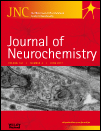 A neurochemistry journal has retracted a paper from a group in China over a duplicated image.
A neurochemistry journal has retracted a paper from a group in China over a duplicated image.
According to the notice, the authors used the same image in the two papers to represent different experimental conditions. The only distinguishing feature between the images: “apparent brightness changes.”
The authors defended their actions, explaining that the research published in Journal of Neurochemistry “sequentially builds” on their previous study in Journal of Neuroinflammation, which they mention in the 2015 paper’s discussion. In the notice, the authors were quoted saying:
…at the beginning, we performed these experiments and wrote these two manuscripts together…
In the 2015 paper, the authors do explain that the current study is “an extension” of previous work:
This work builds on our previous study, in which we hypothesized that CXCL12 and CXCR4 might be implicated in aberrant pain sensitization through directly mediating pronociceptive signaling pathways in spinal glial cells.
But the editors quibbled with this explanation, noting that the wording in the 2015 paper implies that it:
…was a follow-up based on a new original data set.
According to the notice, the authors provided the journal with additional information and data, but the editors were not convinced and ultimately could not confirm the data were reliable.
Here’s the full retraction notice, which details the disagreement between the authors and journal:
The retraction has been agreed as the same GFAP immunostaining image was used to represent different experimental conditions in two different publications (Shen et al. [2014] in the Journal of Neuroinflammation and Hu et al. [2015] in the Journal of Neurochemistry), with apparent brightness changes between the images. Shen et al. (2014) show in the outer right panel of Figure 4a, as well as in Fig. 8A for the GFAP/sham condition, a GFAP immunostaining after treatment with TCI + Fluorocitrate. The same image, at a lower intensity, is used in Hu et al. (2015) in the first panel of figure 5b as a sham control. The shape of the tissue margins of the spinal cord section as well as several landmark epitopes that point towards identical images are encircled: The authors confirmed that ‘The research published in JNC sequentially builds on our previous study published in Journal of Neuroinflammation, as we have mentioned in the discussion. So, at the beginning, we performed these experiments and wrote these two manuscripts together,’ whereas the statements in the Hu et al. paper, ‘The testing procedure was performed according to previously standardized protocols (Hargreaves et al. 1988) and our published report (Shen et al. 2014) … confirmed our previous report (Shen et al. 2014)’ imply that the Hu et al. study was a follow-up based on a new original data set. The authors were given the opportunity to respond and to provide the original raw images. Several Sham group GFAP immunostainings were sent. However, the reliability of the data that was presented in the publication could not be confirmed and the paper is therefore being retracted. A corrigendum related to a different problem with data representation that was previously issued for this paper is also being retracted (Hu et al. 2015, Corrigendum).
“CXCL12/CXCR4 chemokine signaling in spinal glia induces pain hypersensitivity through MAPKs-mediated neuroinflammation in bone cancer rats” also received an erratum in 2015, which explains that the authors used the wrong control number for the rats in several figures. Here’s the corrigendum notice, which includes corrected figures:
The following accepted article from the Journal of Neurochemistry entitled, ‘CXCL12/CXCR4 chemokine signaling in spinal glia induces pain hypersensitivity through MAPKs-mediated neuroinflammation in bone cancer rats’ by Hu et al. (2015), erratically published an incorrect number of animals (n) used for the CXCL12 2 μg control group shown in Figures 1b and 1f. To clarify, six (n = 6) instead of five animals were used. Figures 1a, 1e, 2b, 2c, 2d and 2e also used six animals (n = 6) for the CXCL12 2 μg control group. The corresponding author confirms that the figure panels 1a/b, 1e/f, 2b/d and 2c/e, respectively, include the same cohort of control animals (see filled red circles representing the CXCL12 2 μg control group in the figures below).
The 2015 paper has been cited 19 times, according to Clarivate Analytics’ Web of Science, formerly part of Thomson Reuters.
We reached out to last and corresponding author Wen Shen as well as first author Xue-Ming Hu, both based at the The Affiliated Hospital of Xuzhou Medical College in China. We also contacted the journal’s chief and managing editors. We will update the post if we hear back.
Like Retraction Watch? Consider making a tax-deductible contribution to support our growth. You can also follow us on Twitter, like us on Facebook, add us to your RSS reader, sign up on our homepage for an email every time there’s a new post, or subscribe to our daily digest. Click here to review our Comments Policy. For a sneak peek at what we’re working on, click here.